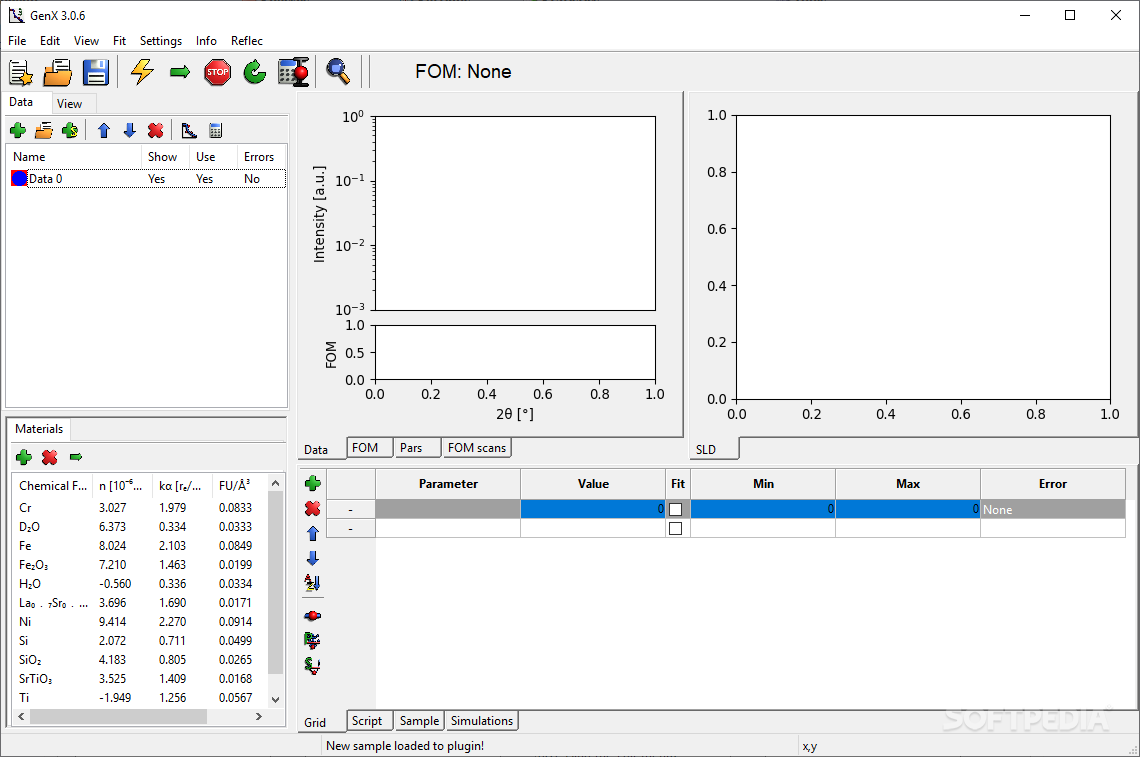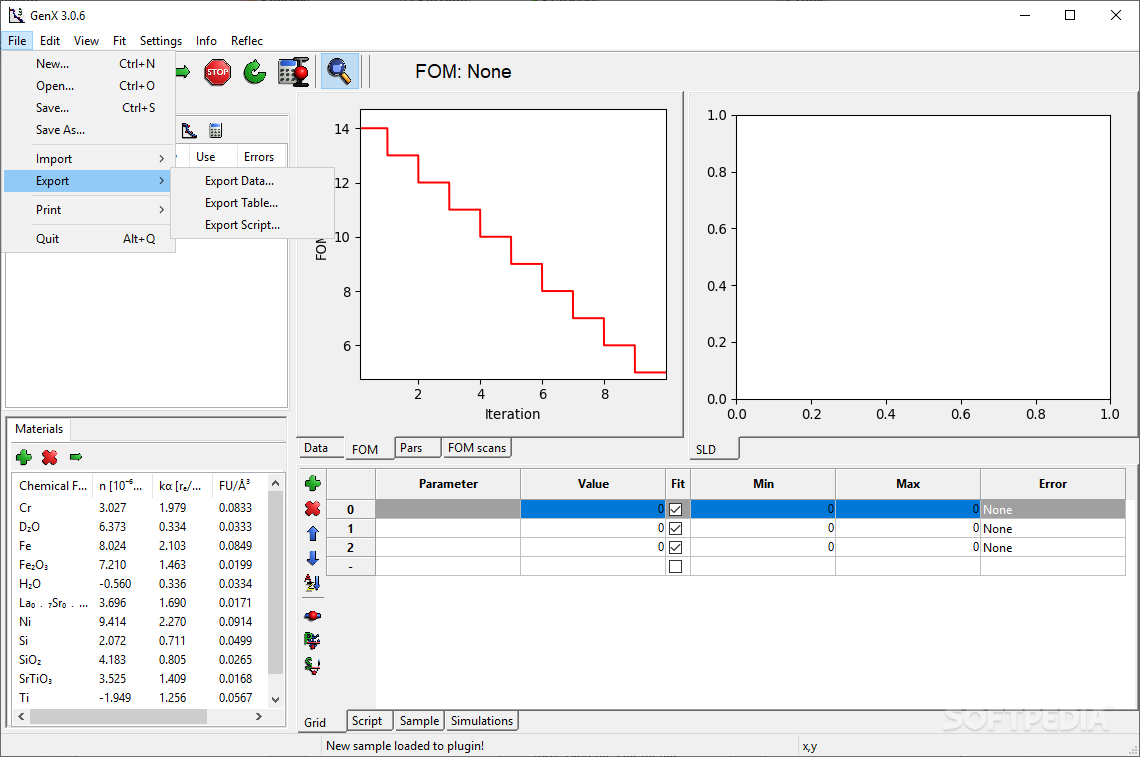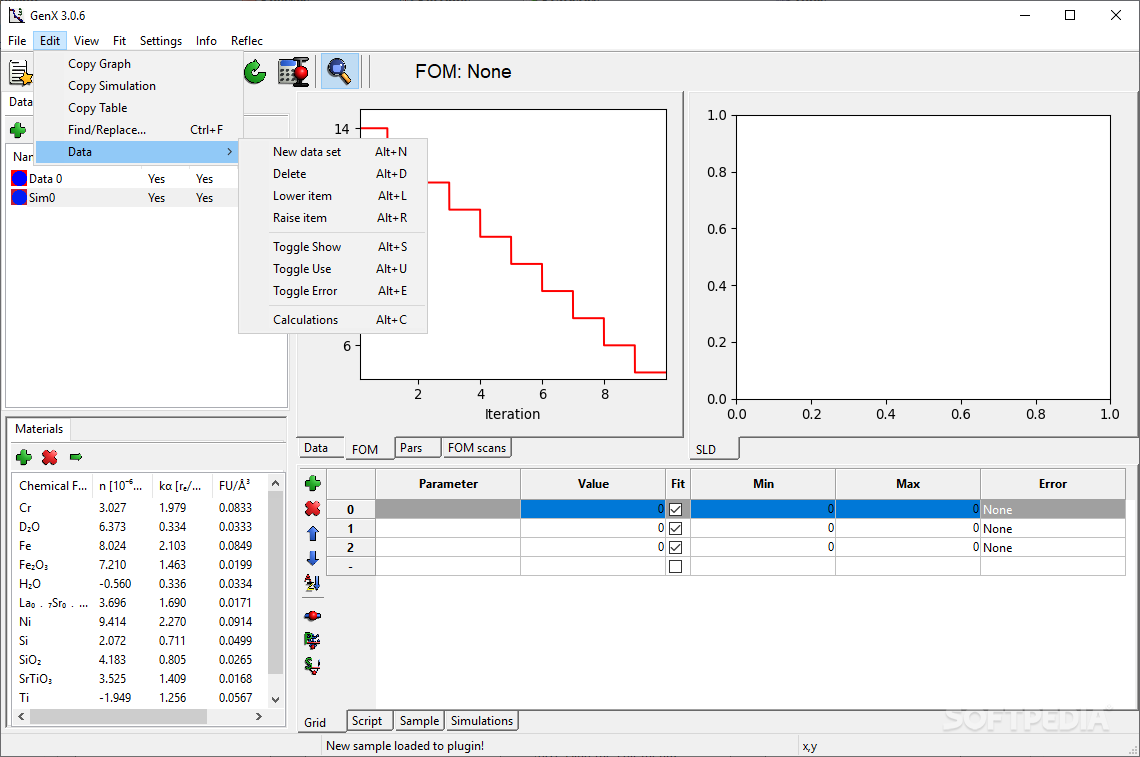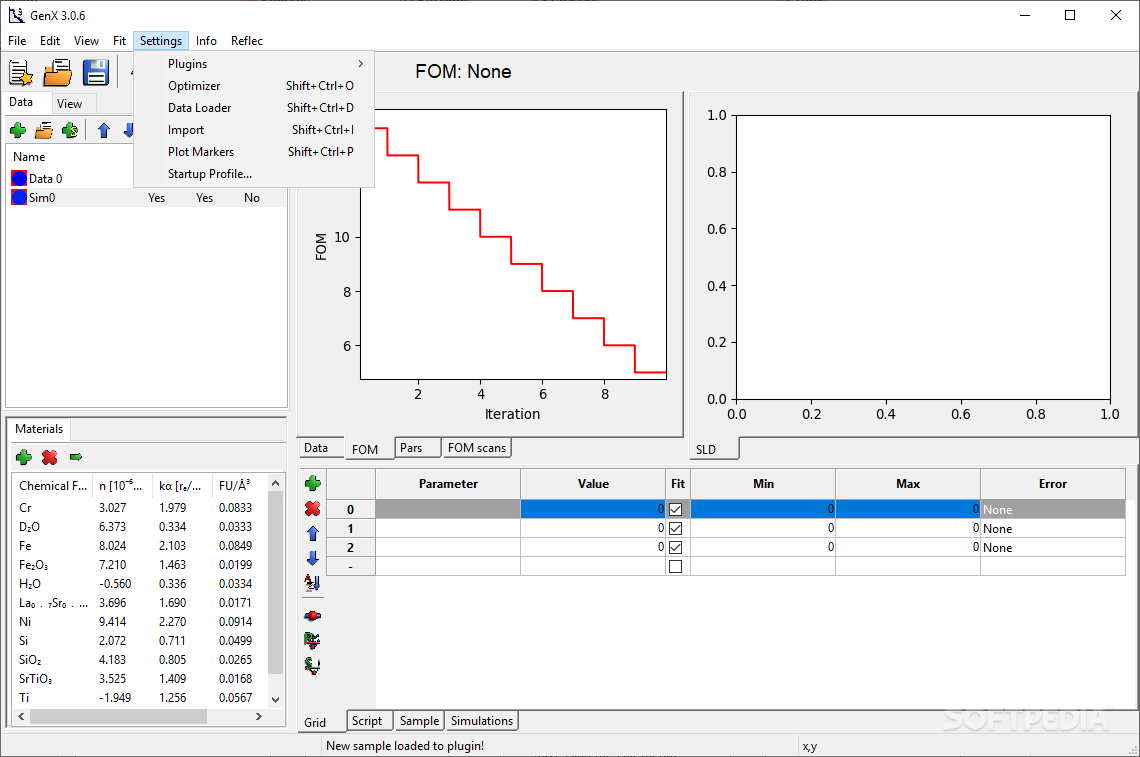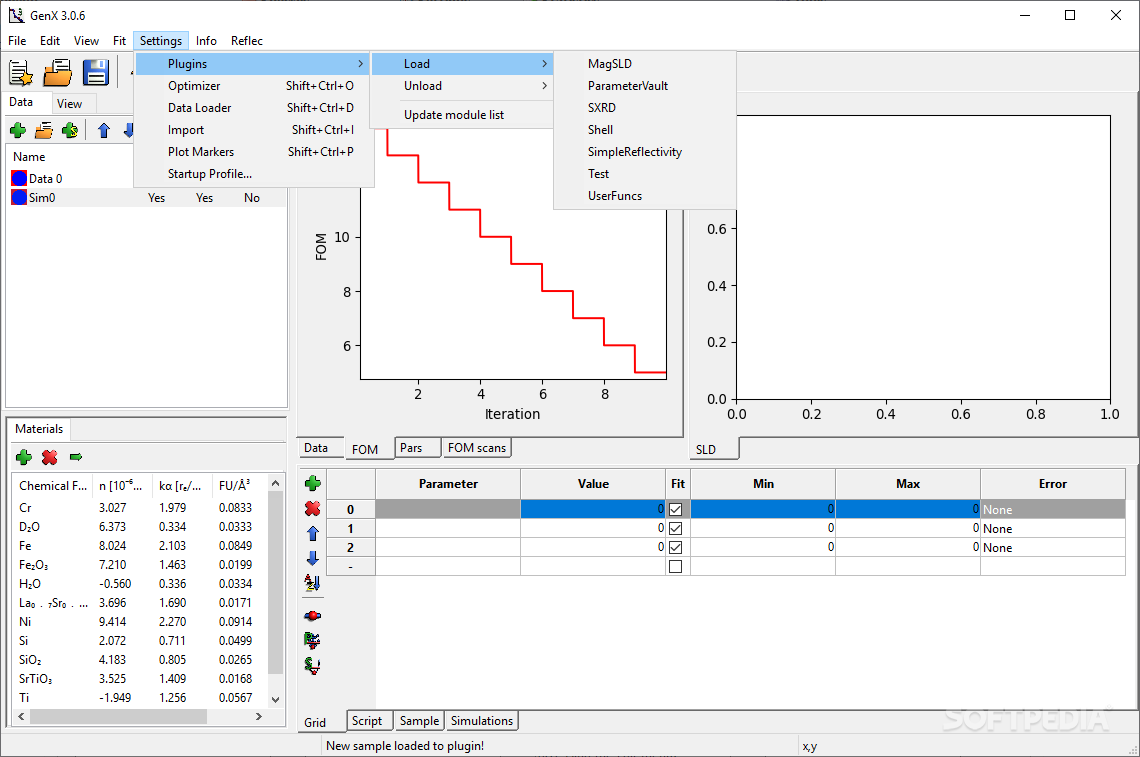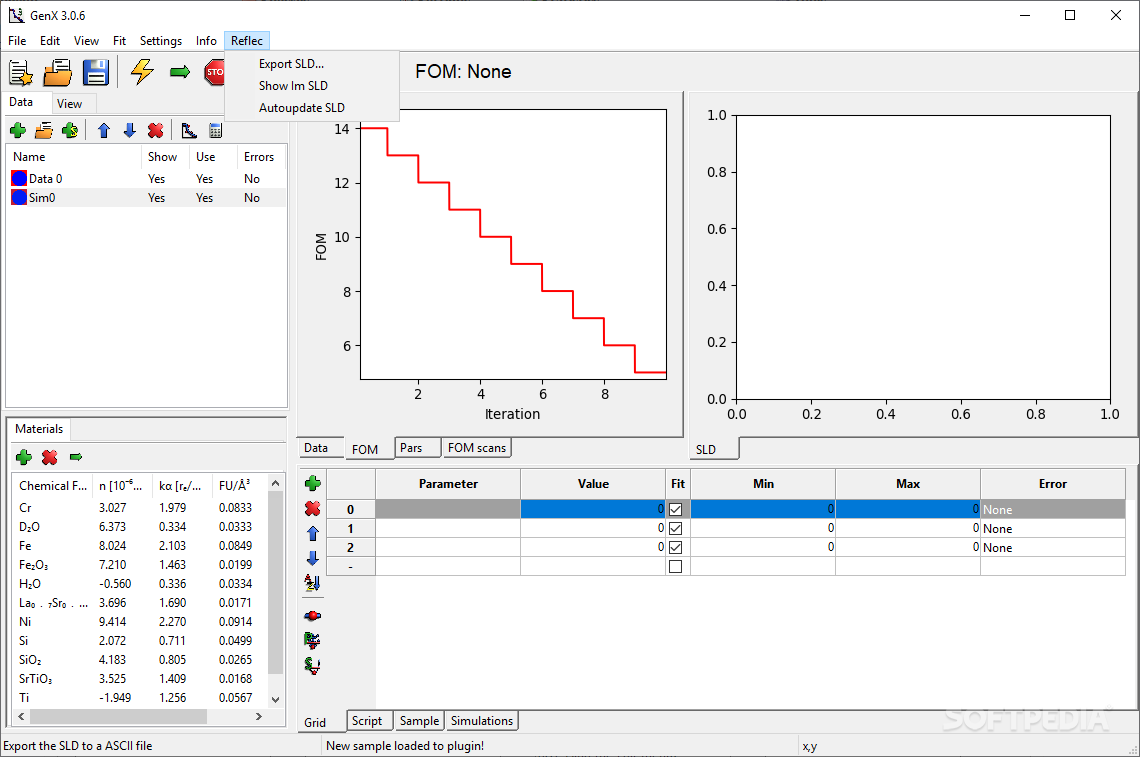
GenX
3.4.0A comprehensive software solution that enables you to refine x-ray diffraction data that can also be used as a general fitting program
GenX is a powerful program that can assist users in making X-ray and neutron reflectivity data refinements. The software saves data in HGX and GX program-specific formats, but allows users to import and export data from and to DAT, TAB and PY documents.
The resource is valuable to scientists working in the field of X-ray reflectivity. Therefore, chemists, physicists and anyone involved in the field of Materials Science will greatly benefit from the differential evolution algorithm the tool uses in order to refine source data.
For a highly specialized program, GenX's GUI is surprisingly simple and easy to grasp. The main window is built around several working frames that harbor either the source data or the resulting charts. Considering its complex nature, the number of menu items is fair, and several buttons constitute quick-links to often-used program functions.
There are two methods of loading data into the program: either manually, or by importing DAT and TAB documents. Python scripts can also be loaded into the application; the regular program working formats are HGX and GX.
The real power behind GenX is not, however, its ability to gather source data into a single format, but its differential evaluation algorithm. This confers the software great versatility and power, and means that the tool can be used as a general data fitting program.
This setup allows professional users, perhaps even amateur enthusiasts with sufficient knowledge, to refine X-ray and neutron reflectivity, as well as X-ray diffraction data. The optimization method employed ensures accurate results with minimum use of system resources.
Summing up, GenX is a comprehensive utility that can be effectively used for X-ray and neutron reflectivity data optimization processes.
Useful for professional chemists and physicists
The resource is valuable to scientists working in the field of X-ray reflectivity. Therefore, chemists, physicists and anyone involved in the field of Materials Science will greatly benefit from the differential evolution algorithm the tool uses in order to refine source data.
For a highly specialized program, GenX's GUI is surprisingly simple and easy to grasp. The main window is built around several working frames that harbor either the source data or the resulting charts. Considering its complex nature, the number of menu items is fair, and several buttons constitute quick-links to often-used program functions.
Can import DAT, TAB files and PY scripts
There are two methods of loading data into the program: either manually, or by importing DAT and TAB documents. Python scripts can also be loaded into the application; the regular program working formats are HGX and GX.
The real power behind GenX is not, however, its ability to gather source data into a single format, but its differential evaluation algorithm. This confers the software great versatility and power, and means that the tool can be used as a general data fitting program.
Features optimization algorithms for data fitting
This setup allows professional users, perhaps even amateur enthusiasts with sufficient knowledge, to refine X-ray and neutron reflectivity, as well as X-ray diffraction data. The optimization method employed ensures accurate results with minimum use of system resources.
Summing up, GenX is a comprehensive utility that can be effectively used for X-ray and neutron reflectivity data optimization processes.
213 MB
Info
Update Date
Aug 16 2021
Version
3.4.0
License
GPLv2
Created By
Matts Björck
Related software CAD
